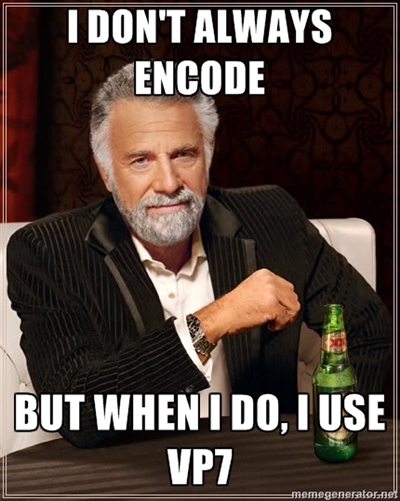While a certain country cosplays the Third Reich and conducts talvisota simultaneously—and tries to bomb my home city to debris, I still need some distraction…

borrowed from vp7.de
Since I’m rather bored with VP7 encoder I’ve decided to release it and move to something else. It should work about the same as VP6 encoder (i.e. poorly and nobody should care about it) but if you want to know what knobs you can turn just invoke nihav-encoder --query-encoder-options vp7 (but I guess the only useful options are to set bitrate/quantiser and keyframe interval).
Have fun!
Update from March 4: encoding with low quantisers should now work as well.